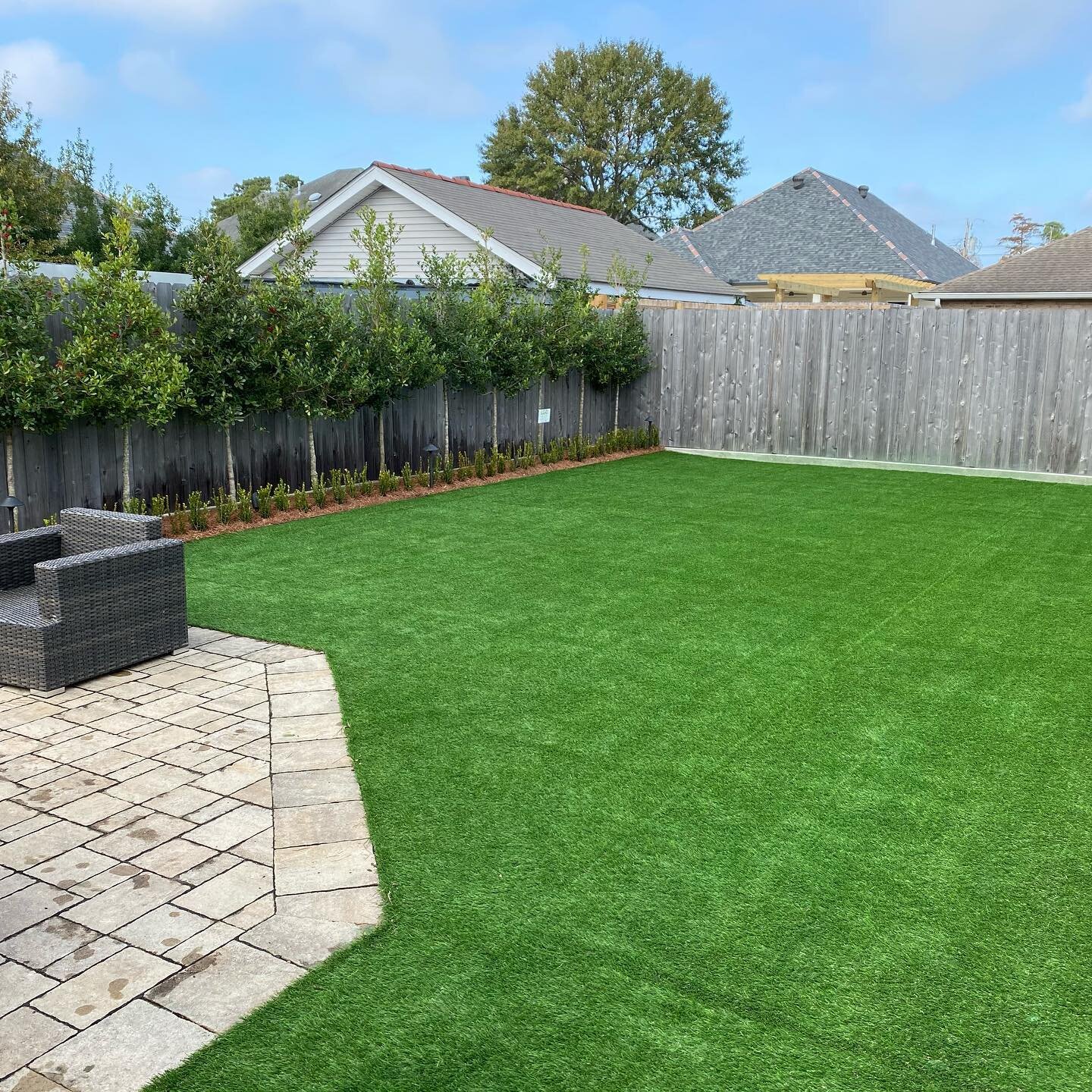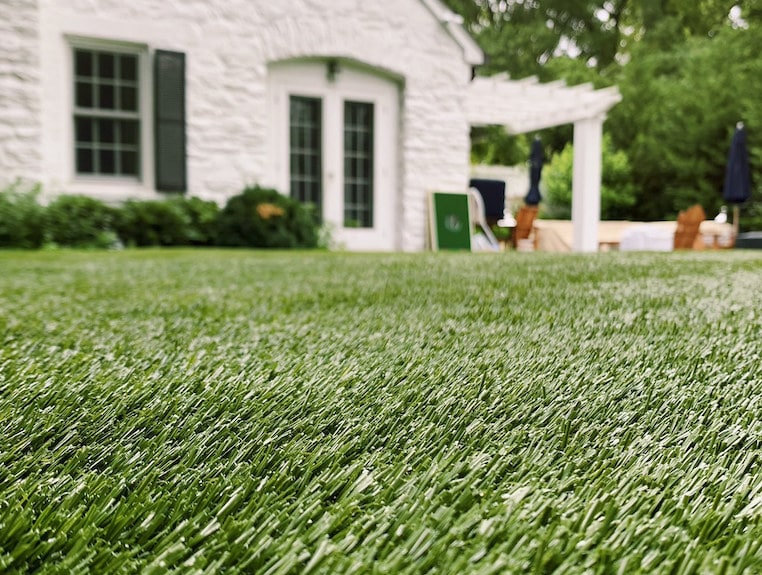Upgrade Your Yard with Expert Turf Installation Phoenix AZ Solutions
Upgrade Your Yard with Expert Turf Installation Phoenix AZ Solutions
Blog Article
See Why Homeowners Prefer Synthetic Grass for Sustainable Landscape Design Practices
As house owners progressively focus on sustainability in landscape design, synthetic grass has actually become a compelling alternative to traditional yard. Its capability to save water, reduce maintenance efforts, and lessen environmental effect placements it as a sensible option for those seeking green services. The aesthetic allure and convenience of man-made grass cater to diverse style choices. Nevertheless, the implications of this shift expand beyond plain ease and aesthetics, motivating a more detailed evaluation of how these options affect broader ecological results. What stays to be discovered is the complete extent of advantages that synthetic grass can offer to home owners and the setting alike.
Water Conservation Advantages
One of the most substantial benefits of synthetic grass is its function in water conservation. Standard grass lawns call for considerable amounts of water to keep their lush look, often bring about overuse of local water resources, particularly in dry regions. On the other hand, synthetic turf eliminates this need totally, as it does not need watering. This not only conserves water but likewise minimizes the stress on community water supply, particularly during dry spell problems.
Furthermore, the installment of synthetic grass can add to an extra sustainable landscape. Home owners can substantially reduce their water costs, permitting reallocation of sources to various other ecological efforts or house uses. Furthermore, fabricated lawn is designed to withstand various climatic problems without the demand for supplemental watering, making it an ideal selection for areas encountering water scarcity.
The ecological benefits extend past prompt water cost savings. By reducing water consumption, fabricated turf helps to alleviate the impacts of environment change, preserving vital communities that are endangered by extreme water removal. As lasting landscaping practices acquire traction, synthetic grass becomes an accountable choice for house owners seeking to develop green exterior spaces.
Reduced Upkeep Efforts
Fabricated lawn considerably reduces maintenance initiatives compared to conventional lawn lawns. With fabricated grass, property owners can get rid of the lengthy jobs associated with all-natural landscaping, such as mowing, feeding, and weeding. This not only conserves beneficial time but also reduces physical labor, making grass care available for people of all ages.
One of the most noteworthy advantages is the absence of regular mowing. Typical grass require constant cutting to maintain an aesthetically pleasing height, whereas synthetic grass stays consistently lush without the requirement for reducing. Furthermore, home owners no longer need to apply plant foods or pesticides, which are often needed to maintain all-natural lawn healthy and balanced. This shift not just lightens the work but also advertises a neater, a lot more uniform appearance year-round.
Additionally, synthetic grass is long lasting and resilient, requiring minimal upkeep beyond occasional brushing and washing to remove debris. This convenience of upkeep allows house owners to enjoy their outdoor areas without the constant worry of upkeep, supplying more time for recreation and family tasks. Inevitably, the decreased maintenance efforts connected with synthetic grass make it an attractive option for those seeking a low-maintenance, visually appealing landscape.

Ecological Effect Reduction
There is a growing recognition of the environmental advantages connected with synthetic grass, particularly in regards to water preservation and minimized chemical usage. Conventional yards call for significant amounts of water, specifically in drought-prone areas, leading to boosted pressure on local water resources. On the other hand, synthetic grass eliminates the requirement for irrigation, significantly reducing water usage and advertising sustainability.
Furthermore, standard lawn upkeep often includes the application of herbicides, fertilizers, and pesticides, which can add to dirt and water contamination. Artificial lawn alleviates this environmental threat by needing minimal upkeep and basically removing the need for unsafe chemicals. This not just boosts dirt wellness but likewise safeguards local communities from toxic runoff.
In addition, the manufacturing of all-natural lawn yards normally includes using nonrenewable fuel sources for mowing and landscape design tools, further contributing to greenhouse gas emissions. By picking synthetic grass, home owners can significantly lower their carbon impact associated with lawn treatment activities.
Visual Appeal and Convenience
Along with its environmental benefits, artificial grass supplies significant aesthetic charm and convenience for landscaping. Home owners can attain a rich, environment-friendly appearance year-round, removing the seasonal variations generally associated with natural grass. This constant aesthetic not just improves the aesthetic appeal of a residential or commercial property however likewise adds to a sleek and index well-maintained appearance.
Additionally, artificial turf is offered in a variety of shades, designs, and structures, enabling modification to fit individual choices and style motifs - Arizona artificial turf. Whether made use of in domestic yards, business rooms, or entertainment locations, it can perfectly integrate right into varied landscaping designs, from contemporary minimalist to rich exotic setups
The versatility of man-made turf expands beyond mere appearance; it can be mounted in numerous locations, including rooftops, patios, and even indoor spaces, developing opportunities for distinct landscaping solutions. Additionally, it appropriates for a variety of activities, from children's backyard to pet-friendly settings, giving capability without endangering design.
Eventually, the aesthetic appeal and adaptability of synthetic grass make it an appealing choice for property owners seeking sustainable landscaping remedies that do not sacrifice elegance for environmental responsibility.

Long-Term Expense Financial Savings
One of the most engaging benefits of fabricated turf is its potential for long-lasting cost savings. Unlike natural grass, which needs regular maintenance-- including mowing, watering, fertilizing, and bug control-- man-made turf considerably reduces these recurring expenses.
In addition, synthetic grass has a life expectancy of 15 read more to 25 years, relying on its top quality and usage. This durability lessens substitute prices, making it an extra cost-effective selection in the long run. The initial investment in synthetic grass can commonly be redeemed with the financial savings accrued over time.
While the ahead of time expense may appear higher compared to turf installment, the cumulative financial savings from decreased maintenance and water use often outweigh these initial expenditures. Eventually, the adoption of synthetic grass not just advertises a lasting landscape design option yet additionally uses home owners a financially wise alternative that straightens with long-term budgeting objectives.
Conclusion
Artificial turf emerges as a compelling option for sustainable landscape design, providing considerable benefits in water preservation, lowered upkeep efforts, and reduced environmental effect. As communities increasingly focus on ecologically friendly methods, the adoption of fabricated lawn represents a dynamic action toward accomplishing resilient and lasting landscapes.
Furthermore, synthetic turf is developed to withstand different weather conditions without the demand for supplemental watering, making it an excellent selection for regions encountering water deficiency. (Artificial turf companies phoenix)

Artificial turf emerges as a compelling option for lasting landscape design, using significant advantages in water conservation, minimized check here maintenance efforts, and diminished environmental effect.
Report this page